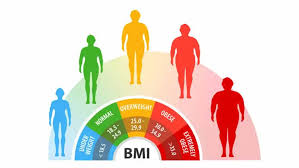In a world where social media has become an integral part of daily life, the way individuals present themselves online can often reveal deeper insights into their mental and emotional well-being. A recent study has shed light on how WhatsApp profile pictures may serve as a subtle indicator of body dysmorphic disorder, particularly among individuals grappling with obesity.
The study, presented at the European Congress on Obesity (ECO) in Venice, Italy, examined the WhatsApp profile pictures of 59 obese patients, consisting of 49 females and 10 males, with a mean age of 53 years and a mean BMI of 32 kg/m². Led by Antonella Franceschelli from Unicamillus International Medical University in Italy, the research uncovered a striking correlation between obesity, body dysmorphia, and the choice of profile pictures.
Body dysmorphic disorder, characterized by a distorted perception of one’s own appearance, often manifests as dissatisfaction, shame, or anxiety about physical features. Among those living with obesity, this disorder can manifest in the belief that one is heavier than their actual weight. The study revealed that a significant majority of participants, 90% of men and 86% of women, displayed profile pictures that did not accurately represent their physical reality.
According to Franceschelli, the lead researcher, the profile pictures of these individuals often depicted objects such as pets, family members, landscapes, cartoon characters, or flowers, with a conspicuous absence of their own bodies. This avoidance of self-representation suggests a subconscious effort to conceal perceived flaws or discomfort with one’s appearance.
Moreover, the study highlighted the role of social media in exacerbating concerns about physical appearance, as individuals with body dysmorphic disorder may feel particularly sensitive to idealized images propagated on these platforms. The constant comparison to unrealistic beauty standards perpetuated through social media can intensify feelings of inadequacy and fuel body dissatisfaction.
Importantly, the research underscored that the likelihood of using a profile picture disconnected from physical reality increased with the severity of obesity, emphasizing the need for heightened vigilance in identifying and addressing body dysmorphia within obesity treatment protocols.
Franceschelli emphasized the significance of recognizing subtle indicators of body dysmorphic disorder, such as profile picture choices, as they could provide valuable insights for healthcare professionals involved in obesity management. By integrating assessments for body dysmorphia into obesity treatment strategies, clinicians can offer more comprehensive care tailored to the unique needs of each individual.
As the prevalence of obesity continues to rise globally, understanding the complex interplay between physical health and psychological well-being is crucial for promoting holistic approaches to healthcare. The findings of this study offer a poignant reminder of the multifaceted nature of obesity and the importance of addressing underlying psychological factors in conjunction with medical interventions.
In an era dominated by digital interactions, even the seemingly innocuous choices made on social media platforms can offer profound insights into the human psyche. By leveraging these digital breadcrumbs, healthcare professionals can pave the way for more empathetic and effective interventions, ultimately fostering greater well-being for individuals grappling with obesity and body dysmorphia alike.











